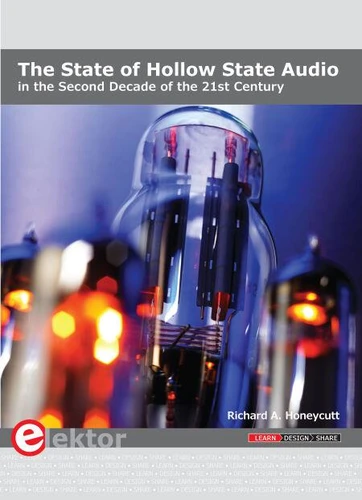The State of Hollow State Audio. in the Second Decade of the 21st Century
Par :Formats :
Disponible dans votre compte client Decitre ou Furet du Nord dès validation de votre commande. Le format PDF est :
- Compatible avec une lecture sur My Vivlio (smartphone, tablette, ordinateur)
- Compatible avec une lecture sur liseuses Vivlio
- Pour les liseuses autres que Vivlio, vous devez utiliser le logiciel Adobe Digital Edition. Non compatible avec la lecture sur les liseuses Kindle, Remarkable et Sony
 , qui est-ce ?
, qui est-ce ?Notre partenaire de plateforme de lecture numérique où vous retrouverez l'ensemble de vos ebooks gratuitement
Pour en savoir plus sur nos ebooks, consultez notre aide en ligne ici
- Nombre de pages377
- FormatPDF
- ISBN978-1-907920-79-0
- EAN9781907920790
- Date de parution30/12/2019
- Protection num.Digital Watermarking
- Taille39 Mo
- Infos supplémentairespdf
- ÉditeurA PRECISER
Résumé
Vacuum-tube (or valve, depending upon which side of the pond you live on) technology spawned the Age of Electronics early in the 20th Century. Until the advent of solid-state electronics near mid-century, hollow-state devices were the only choice. But following the invention of the transistor (after their process fell to reasonable levels), within a couple of decades, the death of vacuum tubes was widely heralded.
Yet here we are some five decades later, and hollow-state equipment is enjoying something of a comeback, especially in the music and high-end audio industries. Many issues surround hollow-state audio: . Does it produce-as some claim-better sound? If so, is there science to back up these claims? . How do hollow-state circuits work? . How do you design hollow-state audio circuits? .
If hollow-state equipment fails, how do you go about troubleshooting and repairing it? . Can we recreate some of the classic hollow-state audio devices for modern listening rooms and recording studios? . How can we intelligently modify hollow-state amplifiers to our taste? These and other topics are covered in The State of Hollow-State Audio.
Yet here we are some five decades later, and hollow-state equipment is enjoying something of a comeback, especially in the music and high-end audio industries. Many issues surround hollow-state audio: . Does it produce-as some claim-better sound? If so, is there science to back up these claims? . How do hollow-state circuits work? . How do you design hollow-state audio circuits? .
If hollow-state equipment fails, how do you go about troubleshooting and repairing it? . Can we recreate some of the classic hollow-state audio devices for modern listening rooms and recording studios? . How can we intelligently modify hollow-state amplifiers to our taste? These and other topics are covered in The State of Hollow-State Audio.
Vacuum-tube (or valve, depending upon which side of the pond you live on) technology spawned the Age of Electronics early in the 20th Century. Until the advent of solid-state electronics near mid-century, hollow-state devices were the only choice. But following the invention of the transistor (after their process fell to reasonable levels), within a couple of decades, the death of vacuum tubes was widely heralded.
Yet here we are some five decades later, and hollow-state equipment is enjoying something of a comeback, especially in the music and high-end audio industries. Many issues surround hollow-state audio: . Does it produce-as some claim-better sound? If so, is there science to back up these claims? . How do hollow-state circuits work? . How do you design hollow-state audio circuits? .
If hollow-state equipment fails, how do you go about troubleshooting and repairing it? . Can we recreate some of the classic hollow-state audio devices for modern listening rooms and recording studios? . How can we intelligently modify hollow-state amplifiers to our taste? These and other topics are covered in The State of Hollow-State Audio.
Yet here we are some five decades later, and hollow-state equipment is enjoying something of a comeback, especially in the music and high-end audio industries. Many issues surround hollow-state audio: . Does it produce-as some claim-better sound? If so, is there science to back up these claims? . How do hollow-state circuits work? . How do you design hollow-state audio circuits? .
If hollow-state equipment fails, how do you go about troubleshooting and repairing it? . Can we recreate some of the classic hollow-state audio devices for modern listening rooms and recording studios? . How can we intelligently modify hollow-state amplifiers to our taste? These and other topics are covered in The State of Hollow-State Audio.



